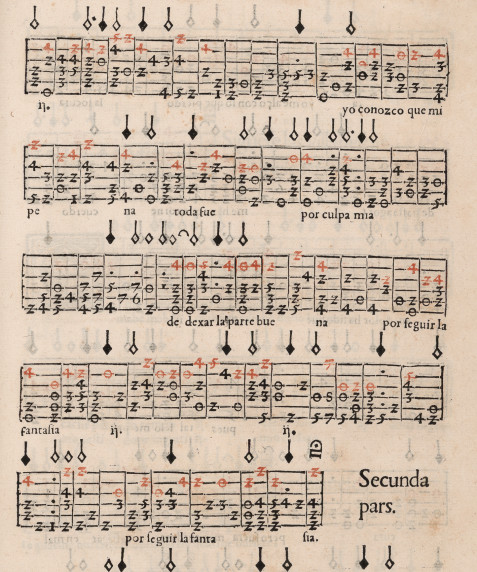Scores and compilations
Between the medieval sources at the national library of Spain highlighted, in addition a courtesan including monody codices polyphony and from the cathedral of Toledo, a number of original codices of ancient liturgy hispanic, aka 'visigótico-mozárabe », the centuries X-XI.
Within the fund can highlight some manuscript cancioneros spanish premium centuries XVI-XVII (as the so-called Cancionero of Onteniente) and an exceptional collection of rights' 'tones or spanish with baroque of the first, with works by Juan Hidalgo, José Marín, Juan watershed, etc. Regarding the handwritten instrumental music, stresses the famous collection of works for Body and Coll Martín, from the early 18th century.
With regard to the collection of literature spanish musical prior to the twentieth century is undoubtedly the most important of the world: copies original music books commissioned by cardinal Jiménez de Cisneros to printer Arnaldo Guillén of Brocar, of the first years of the 16th century, as well as almost all our instrumental music of the renaissance and baroque (Antonio de Cabezón, Venegas of Henestrosa and Correa de Araujo, books of vihuela Luis of Milan, Narváez, Fuenllana, Mudarra, Valderrábano, Pisador, Daza …); the spanish Renaissance polyphony is represented by original sources of Morales, Guerrero, Infantas or victory, and for students of the baroque guitar are secured copies of works by Gaspar Sanz, Ruiz de Ribayaz, Santiago de Murcia, etc. The 18th century we retain some autographs of italian composer Luigi Boccherini. In Addition, we can consult the Library in almost every edition of instrumental music produced in our country or composed of spanish authors at that time (José Torres, Herrando Manalt, canals, Minguet, Espinosa, Teixidor, Reynoso, Ferrandiere, Manuel García, etc.), numerous manuscripts, nearly a thousand foreign editions of chamber music orchestral and of the second half of the century, with broad representation of the most known at the international level (Haydn, Pleyel, Stamitz, Boccherini, etc.) and whose music widely circulated by spain. The collection from the 19th century grew exponentially, along with notable collections handwritten italian opera houses of the first of the 19th century (Rossini, Bellini, Mercadante, etc.), in the second half of the nineteenth century, and in the twentieth century, it acquired thousands of works admitted through the Intellectual property registry, and since 1958 thanks to the laws of the Legal deposit with all kinds of compositions and gender-present.






![El primo [secondo] libro de Diego Ortiz Tolletano](/sites/default/files/styles/bloque_obras_imagenes_xl/public/repositorio-imagenes/R_014653_000008_NEXUS_0.jpg?h=d5aacc56&itok=59XDh71Y)


